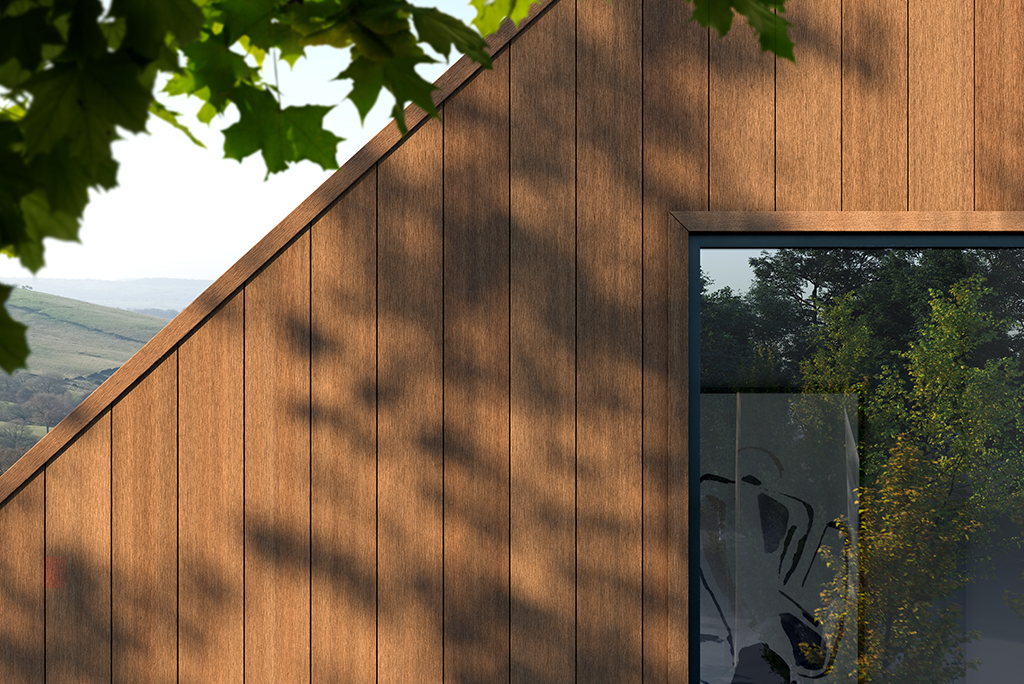As the world becomes increasingly conscious of environmental sustainability, the demand for eco-friendly building materials continues to rise. One material that has gained significant attention in recent years is composite cladding. Combining durability, aesthetics, and environmental benefits, composite cladding presents an appealing alternative to traditional building materials. But how environmentally friendly is composite cladding, and what makes it a responsible choice for modern construction?
Understanding Composite Cladding
Composite cladding is a versatile material made from a blend of wood fibers and recycled plastics. This combination creates a product that is both strong and resistant to the elements, making it an excellent choice for exterior building facades. The manufacturing process for composite cladding involves the use of materials that might otherwise end up in landfills, giving it an immediate advantage in terms of sustainability.
Unlike traditional cladding materials such as wood or vinyl, composite cladding is designed to last longer and require less maintenance. Its durability reduces the need for frequent replacement, which in turn decreases the demand for new resources. Moreover, the production of composite cladding generally involves fewer harmful chemicals and treatments compared to conventional materials, further contributing to its eco-friendly credentials.
Resource Efficiency and Waste Reduction
Composite cladding in Melbourne is made from a blend of recycled materials, including reclaimed wood fibers and plastics. By utilizing these recycled components, the production of composite cladding helps to reduce the amount of waste that would otherwise contribute to landfill. This practice not only conserves natural resources but also helps to mitigate the environmental damage caused by the disposal of plastic waste.
Furthermore, the production process for composite cladding is designed to be highly efficient, with minimal waste generated during manufacturing. The use of recycled materials combined with efficient production processes ensures that composite cladding has a lower overall environmental impact compared to traditional cladding options.
Reducing the Carbon Footprint
Another significant environmental benefit of composite cladding is its potential to reduce the carbon footprint of a building project. Traditional building materials like wood or brick often require significant energy inputs during production, leading to higher carbon emissions. In contrast, the production of composite cladding typically involves lower energy consumption, especially when recycled materials are used.
Moreover, composite cladding’s long lifespan and minimal maintenance requirements contribute to a lower carbon footprint over the building’s life cycle. By reducing the need for frequent repairs and replacements, composite cladding minimizes the energy and resources required for these processes, further enhancing its environmental credentials.
Supporting Sustainable Forestry Practices
The use of wood fibers in composite cladding supports sustainable forestry practices by reducing the demand for virgin timber. Traditional wood cladding often relies on logging, which can contribute to deforestation and the loss of natural habitats. In contrast, the wood fibers used in composite cladding are typically sourced from reclaimed or recycled wood, helping to preserve forests and reduce the impact on natural ecosystems.
By choosing composite cladding, builders and homeowners can contribute to the conservation of forests and the protection of biodiversity. This commitment to sustainability aligns with broader efforts to combat climate change and promote environmentally responsible building practices.
Enhancing Energy Efficiency
Composite cladding can also contribute to the energy efficiency of a building. When properly installed, it can act as an additional layer of insulation, helping to regulate indoor temperatures and reduce the need for heating and cooling. This improved thermal efficiency can lead to significant energy savings over time, which not only benefits the environment but also reduces utility costs for building owners.
The ability of composite cladding to enhance energy efficiency makes it a valuable component in the construction of sustainable buildings. By reducing energy consumption, it helps to lower greenhouse gas emissions, further supporting environmental goals.
Aesthetics and Versatility
While the environmental benefits of composite cladding are significant, it’s also important to consider its aesthetic appeal and versatility. Composite cladding is available in a wide range of colors, textures, and finishes, allowing builders and homeowners to achieve the desired look for their projects without compromising on sustainability. Whether aiming for a modern, sleek appearance or a more traditional, natural look, composite cladding offers design flexibility that complements its environmental advantages.
This versatility also extends to the types of buildings where composite cladding can be used. It is suitable for a variety of applications, from residential homes to commercial buildings, and can be tailored to meet the specific needs of each project. This adaptability ensures that composite cladding can be integrated into a wide range of architectural styles and environments.
Conclusion
Composite cladding stands out as an environmentally friendly option for modern construction, offering a range of benefits that contribute to sustainability. From its use of recycled materials and efficient production processes to its durability and low maintenance requirements, composite cladding reduces the environmental impact of building projects. By supporting sustainable forestry practices and enhancing energy efficiency, it helps to conserve natural resources and lower carbon emissions. Moreover, its aesthetic versatility ensures that builders and homeowners can achieve their desired look without sacrificing environmental responsibility. As the demand for eco-friendly building materials continues to grow, composite cladding offers a compelling solution that meets both functional and environmental needs.
Keep an eye for more news & updates on InternalInSider!










